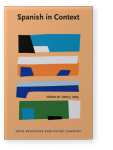Vol. 20:3 (2023) ► pp.411–437
The role of perceptual salience in a strengthening sound change
A comparison of /j/ perception by Colombian and Dominican listeners
The current study examines the extent to which perceptual factors may account for the emergence of assibilated variants of the alveopalatal approximant /j/ in two geographically remote varieties of Spanish. Participants from Medellin, Colombia and Santiago, Dominican Republic completed a discrimination task and a matched guise. Both tasks presented listeners with stimuli containing affricate [ʤ] and approximant [j] allophones of /j/. Participants were more accurate when discriminating between sound pairs that included the affricate allophone, suggesting that the presence of (af)frication is a salient acoustic cue upon which judgments are reliably made. Therefore, we argue that the emergence of assibilated variants ([ʤ], [ʒ]) can be explained in part by more prominent acoustic cuing and thus greater perceptual salience. Evidence of the relationship between these findings and a possible sound change in progress is observed in the association of social characteristics with [ʤ] and [j].
Article outline
- 1.Introduction
- 2.Review of literature
- 2.1Phonetics of /j/ and synchronic variation
- 2.2Variation and change in /j/
- 2.3Perceptual salience
- 3.Methods
- 3.1Participants
- 3.2Experiment design
- 3.2.1Discrimination
- 3.2.2Matched guise
- 3.3Analysis
- 4.Results
- 4.1Discrimination
- 4.2Matched guise
- 5.Discussion
- 6.Conclusion
- Notes
-
References
